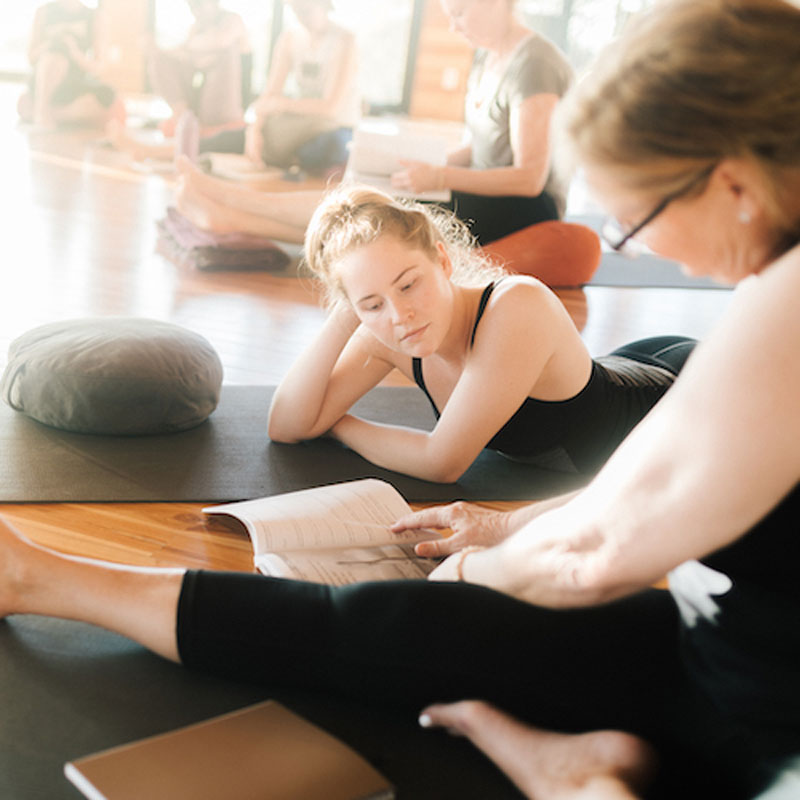So you’re interested in attending a yoga teacher training? Amazing! You are probably filled with a lot of excitement and a lot of questions.
How do you decide which one is right for you, sifting through endless options and marketing speak, without being overly swayed by beautiful photos or special offers? Early bird discount! Free gift if you just sign up for our mailing list!
What is the best yoga teacher training that fits your needs and sets you up for success?
A quick Google search for yoga teacher training (or YTT, 200 hour YTT, 200hr yoga instructor certification, advanced yoga teacher training, or yoga training retreat) will yield thousands of results all over the world. You’ll find booking sites with listings by country, yoga style, time frame, budget, etc. You’ll also find individual websites for yoga studios, resorts, retreat centers, and schools. And there will be advertised (or sponsored) websites at the top of the search rankings.
Before long, all this research makes you feel like crawling into child’s pose or taking an extended Savasana.
We are here to demystify the selection process and help you know which questions to ask. After training hundreds of teachers over the years and operating Costa Rica’s longest running yoga teacher training, here are our top 10 questions that will narrow your search down to the very best choice for you.
1. What are my personal goals for attending a yoga teacher training?
Do you want to teach yoga to others, or simply deepen your personal practice and understanding of yoga? Both are perfectly valid reasons, and not being sure yet if you want to teach is completely valid as well. Many students come to YTT for themselves and discover their calling to teach later. Just keep in mind that you may be required to demonstrate teaching skills in order to receive a certification.
After completing YTT, most people describe it as a life-changing experience. It can be a great way to better understand who you are as a person, or how to move forward with more confidence and self-awareness.
2. Do I want a destination immersion training that’s shorter-term, or a longer term training that doesn’t require me to travel?
Most yoga studios now offer teacher trainings as a way to build revenue, clientele, and future teachers that will teach similarly to other teachers at the studio. Some require you to join and attend classes as part of your requirements. It can be a wonderful opportunity to schedule regular time – usually on long weekends – to learn in a familiar environment. Understand if there are chances to make up lost time if life gets in the way of attendance. And know that teacher training can be quite different from casual attendance in yoga classes at the studio.
Many people ultimately decide that an immersive training out of town is right for them, to get away from life’s daily distractions and fully focus on learning to teach yoga, along with personal growth. If you decide on an immersion retreat style training, a whole slew of new questions arises: See our article on 5 Crucial Questions To Ask For Destination or Immersion Style YTT (I will send you this too)
3. Do I want to learn one style of yoga, or multiple styles of yoga?
If you are interested in only one specific style of yoga, make sure that the training teaches it. But consider that many people are interested in trying out various styles as they go through life. Athletes may only consider power yoga, but may receive the greatest benefits from restorative. Someone with a sedentary lifestyle may only consider Yin yoga, but would benefit from a more active style of yoga. Many schools teach one or two asana sequences and emphasize memorization techniques as they repeat what they practice repeatedly throughout training. This requires their future clients to meet the style or sequence, not the teacher to serve the individual needs of the clients. And, may lead to burn out when teaching the same thing over and over again in the future.
A foundational training that is multidisciplinary, introducing the action of various styles within an overall framework may serve your future teaching opportunities best. Being able to develop an eye for adjustments, and a willingness to adapt teaching based on the needs of the class will offer a greater pool of future clients. As will an ability to teach to various age groups or level of yoga understanding. The difference can be a yoga teacher that actually educates people about their bodies, lifestyles, choices, and opportunities versus one that requires everyone to do the same thing regardless of ability, understanding, injuries, illness, etc.
4. Can I identify with the yoga teachers who lead this teacher training? What is the lineage of their studies?
How far back in the tree of yoga do they go in terms of who they studied with? What is their experience in both teaching yoga and in leading yoga teacher training programs? For how long have they trained yoga teachers, and how many students have been trained? What are the important points of the training that the teachers emphasize? Can I relate to them, the curriculum, and the training experience they provide?
Are the lead trainers E-500 RYT credentialed with Yoga Alliance? This will be a requirement in 2020. Yoga Alliance is recognizing the need for more experienced and trained teachers, so this is incredibly important to guarantee the quality of your training.
Do the lead trainers teach every module? Is a lead trainer at least present in the room if another trainer is leading the program? Many school have assistants teach the majority of the training, or have outside subject matter experts teach a portion of the training. This can be a wonderful addition, or it can seem disjointed from the overall flow of the program. Know in advance how much of the program will be taught by the lead trainers that you are initially attracted to. You may be disappointed the celebrity yogi was only present for initial greeting and a few asana practices.
5. What are the non-contact hours of study? What is required in terms of reading, or out of training work either before or after the training?
Make sure that you fully understand all of the work that is involved in preparation for the training. Some schools have a large list of required reading, but hardly mention the texts while in training. Make sure to ask how your investment in books and reading will directly correlate to the training experience.
Some schools require that you read a philosophy book and create a book report to satisfy the curriculum guidelines for yoga philosophy (HINT: this doesn’t ). Some schools have you watch yoga anatomy videos online to satisfy curriculum guidelines for yoga anatomy (HINT: this doesn’t). Some schools don’t require practicum while in training, asking students to provide a video of themselves teaching a class after they leave the training to satisfy practicum requirements (HINT: this doesn’t) and ultimately receive certification if deemed successful.
Some schools list in very tiny print that the course only satisfies level one of the training, and require the student to invest more time and money for level two in order to receive certification. Make sure you ask about how you will receive certification, the criteria, and timing if certification is important to you. (It should be).
6. What’s included in the investment? What is extra? What is not included?
Many trainings don’t list the amount of taxes or meals for example. Is ground transportation included? Find out typical extra costs so that you have a full picture of your financial commitment.
Cheaper is usually not better – it may be miserable rainy season or the food or lodging are below par. Don’t believe the marketing hype as photos can be deceiving – the rooms may need repairs, or the roofs leak, or the tents/yurts haven’t been replaced in years. You won’t want hardships that will detract from your experience. Be willing to pay for a fully supportive staff and comfortable and safe lodging to allow you to fully focus on your goals.
And don’t underestimate the value of purchasing travel insurance. If your trip is solely for the training, and you spend the majority of each day in training, then it is considered an educational trip, and you can insure your travel and training in case of personal emergency, injury or illness.
7. What does a typical day look like in training?
Understand how the hours of each day are allocated to the various areas of the curriculum. Asana practice. Discussion. Practicum. Meals. Are there activities that are group oriented? Individually oriented? How do the activities relate to the educational areas of emphasis?
8. Will my dietary requirements be observed? If cleanses are part of the training, can I opt out?
Many training program locations can satisfy the majority of dietary requirements. Some are so severe that you should consider attending a program in your local area so you can control all of the variables. Some teacher training programs also involve cleanses or spiritual ceremonies such as ayahuasca. Make sure these align with your health factors, openness, and beliefs.
9. How many people will be in the teacher training?
Look for a group size that is right for you. Larger groups have a lot of energy and can be a great deal of fun. If the training class is on the larger side, how many teachers and teaching assistants will be available each day? Understand the role of the teaching assistants, and how closely you will interact with the teachers. Smaller groups (fewer than12) allow for more in-depth discussions at times, and you will receive a bit more individualized attention. However, you may have limited points of view in a smaller group, and be dominated by one or two personalities in the space.
10. What do others say about this training?
The use of online reviews has exploded in the past few years. Remember that most everyone says their yoga teacher was life-changing. Check out the online reviews – with an educated eye knowing that every review reflects the mindset of the individual. Read enough reviews, both positive and negative, that you have a good overall feel for the place. Ask to speak to some students who have been through the training. We’ve been doing this for so long that those interested are able to find people around the world through social media who have attended our training.
A bonus question: Do you intend to register with Yoga Alliance for RYT (registered yoga teacher) credentials following the training? If so, know that there are several Yoga Alliance credentialing organizations – many with very different curriculum guidelines. For example, Yoga Alliance in the US requires more teacher contact hours than Yoga Alliance International. What is the affiliation of the school and can you find their listing on the accrediting body website?
Know that for yourself, the more prepared you are heading into your yoga teacher training, the better your experience will be. If you are interested, drop us an email. We are thrilled to speak with you about your goals and answer your questions.
Join me at any one of my training retreats throughout the year in Costa Rica, Bali, Spain, Mexico. Learn More.
XOMarianne








